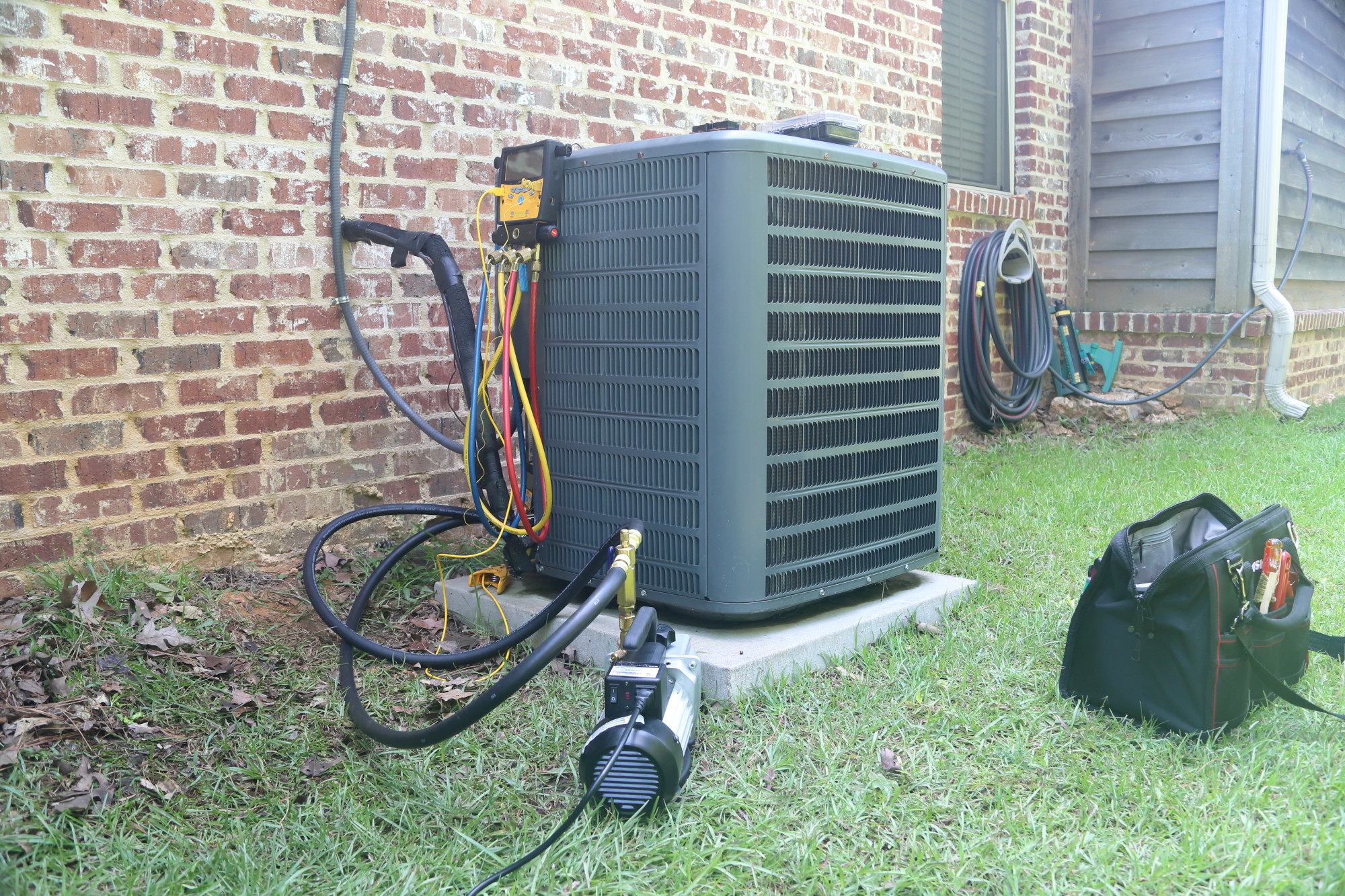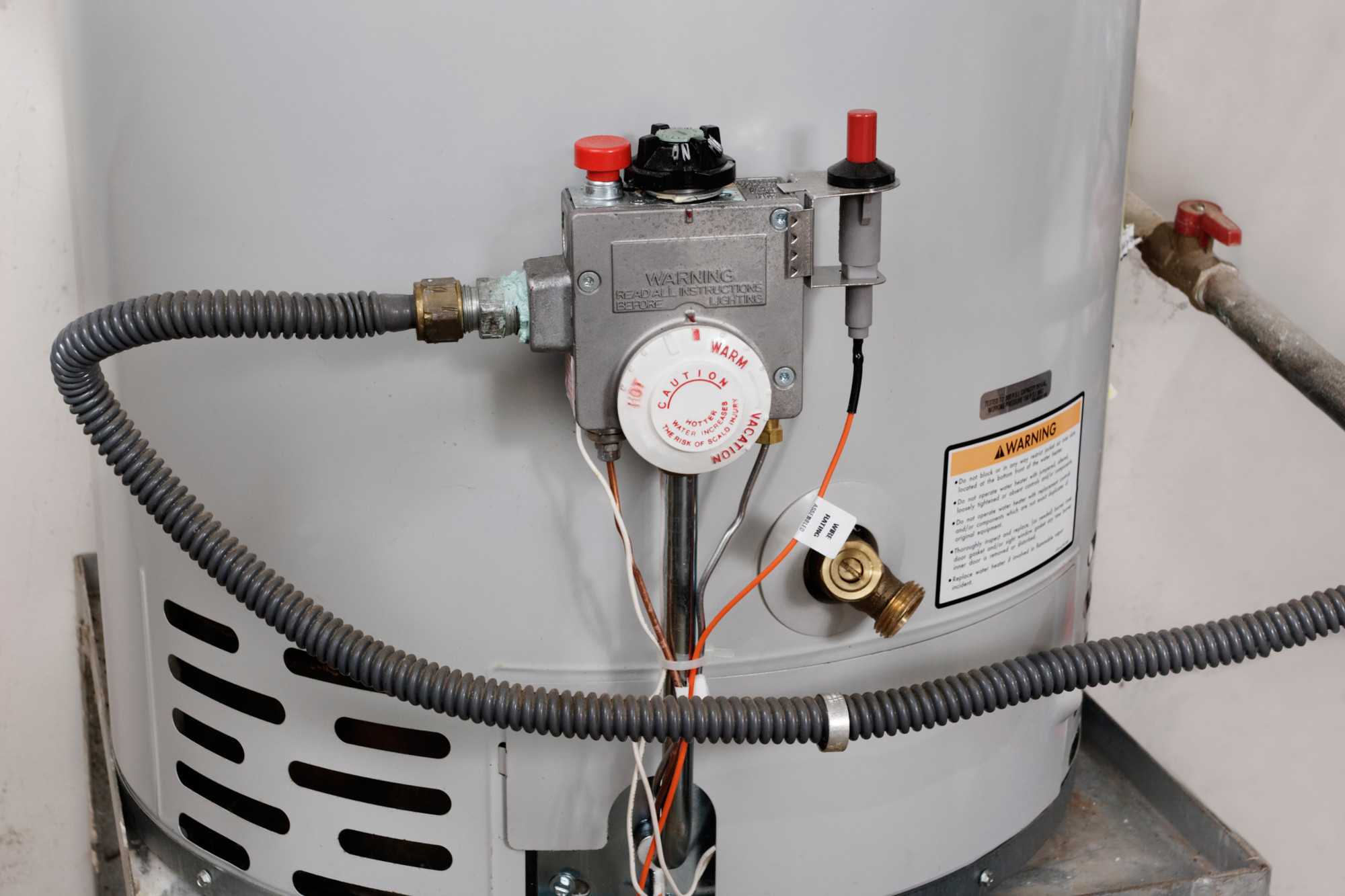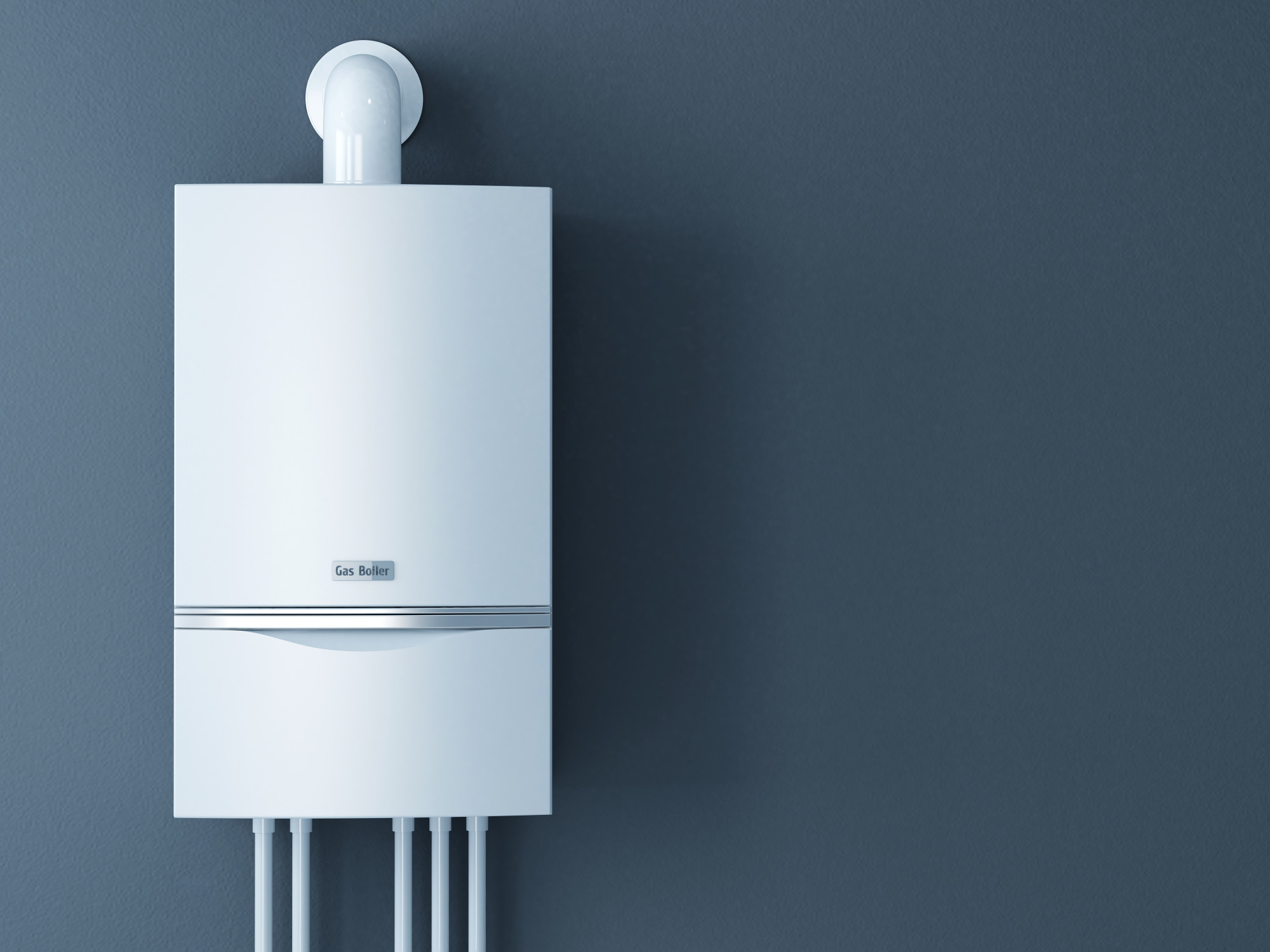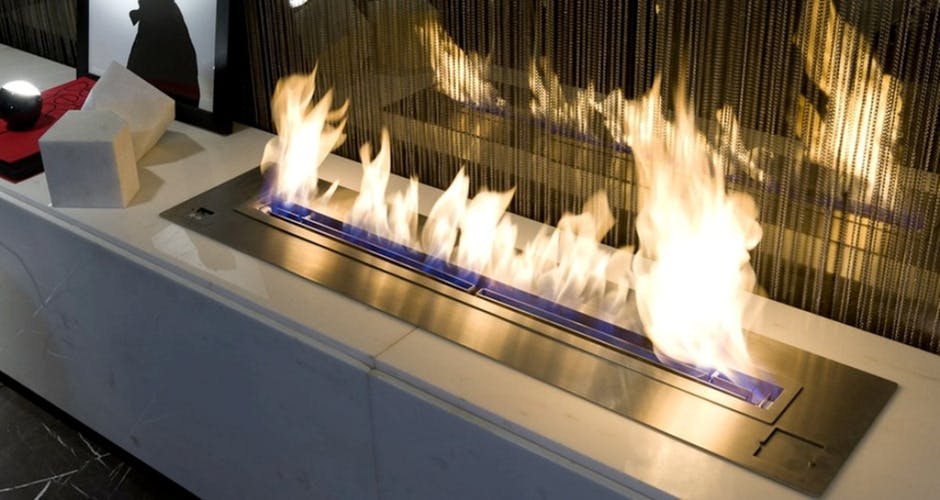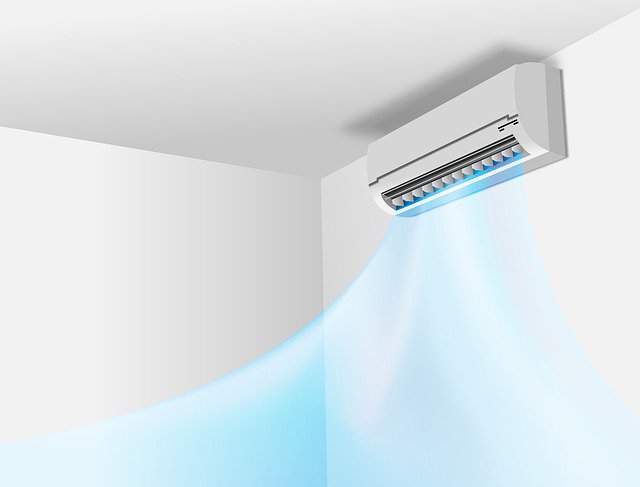No More HCFC-22: What to Know About the R-22 Refrigerant Phase Out
Did you know that since the 1970s, a huge ozone hole above Antarctica has been opening every spring? What's more, some areas of this hole showed a depletion of the ozone levels by as much as 65%!
Researchers also found that the hole grew to a size as big as North America. That’s about 25 million square kilometers!
The main culprits, according to scientists, are chlorofluorocarbons (CFCs), particularly hydrochlorofluorocarbons (HCFCs). These include the R-22 refrigerant used by most air conditioners back then.
Because of this, the Environmental Protection Agency (EPA) has ordered the R-22 phase-out. As of January 01, 2020, it's illegal to produce or import most HCFCs, including the R-22 Freon.
The question is, what does this ban have to do with you as a regular HVAC user? What is Freon anyway?
We'll answer all these questions (and more), so go ahead and read until the end!
What Is R-22 Refrigerant?
R-22 is the most common form of the HCFC-22 chemical, a type of Class II ozone-depleting substance. You likely know R-22 through the brand name "Freon".
As a refrigerant, HCFC-22 is the chemical that heats or cools the air that HVAC systems produce. When this fluid passes through the parts of the HVAC unit, it changes into either liquid or gas.
These transformations then make the refrigerant hot or cold. These changes make the chemical quick to absorb or radiate heat from the passing air. This is how your HVAC system cools or heats your home.
R-22 was the most common type of refrigerant used in HVAC equipment up until January 01, 2010. At this point, the EPA banned its production, import, and use except for existing equipment.
Meaning, if you have an HVAC system manufactured before January 01, 2010, then it likely uses R-22.
Determining What Type of Refrigerant Your HVAC System Uses
If you're unsure of your HVAC unit's manufacturing date, check the label on the compressor. This is the part usually installed outside of the home. The label will clearly tell you if it uses R-22 (HCFC-22) or R-410A (the refrigerant used in newer units).
What’s in Store for Homeowners With R-22 Air Conditioners
The January 2010 ban still allowed the production and use of HCFC-22 for existing units. This exception lasted up until December 31, 2019. This is how owners of HVAC systems that made use of R-22 were still able to get their units recharged.
However, as of January 01, 2020, the EPA has completely banned the production and use of HCFC-22. HVAC systems that still use R-22 would have to rely on "recycled" or "stockpiled" R-22 supply.
If you still have an R-22 AC unit, then you can expect higher refrigerant “recharge” costs. After all, the EPA ban means that the R-22 will become even scarcer than it already is. This scarcity will then drive up the cost of HVAC refrigerant "recharges".
In most cases, air conditioners need a refrigerant charge due to leaks. One solid sign that you have a leaking refrigerant is if your AC unit freezes up. An HVAC technician needs to seal this leak and then top up the refrigerant to make your AC work again.
However, now that the R-22 ban is in place, expect this HVAC repair job to be more expensive.
What You Can Do Now
Having an R-22 HVAC unit doesn’t automatically mean you need a new system right away. Again, the law still allows the use of such equipment. If you can't replace your current HVAC system at the moment, then make sure you at least do the following.
Regular HVAC Maintenance
You can prevent refrigerant leaks in the first place through proper HVAC maintenance. Many leaks occur due to corrosion, which can result from dirt and debris accumulation. Cleaning evaporator and condenser coils regularly can help keep corrosion at bay.
Prompt Repairs for Potential Refrigerant Leaks
Not enough cool air, frozen coils, and weird sounds are symptoms of refrigerant leaks. If you notice these signs of HVAC trouble, have a licensed HVAC technician inspect your unit ASAP. It's possible that there's only a tiny leak that the technician can still seal and repair.
Prompt repairs can prevent more of the pricey R-22 refrigerant from leaking out. This can then help extend the life of your R-22 air conditioning unit.
The Best Way to Address the R-22 Phase-Out
Granted, air conditioners can last between 15 to 20 years. This is also one of the reasons that the HCFC-22 ban still allows for the use of "recycled" R-22.
While you can still use your R-22 AC despite the ban, it doesn't mean that you should. Especially not if your current air conditioner is more than a decade old. Aside from likely being an R-22 user, such old units are more prone to breakdowns.
Over time, the repairs for these HVAC problems will add up to a considerable amount. The repair costs could be so high that it makes more sense to just get a new HVAC unit.
Besides, older HVAC models aren't as energy-efficient as the more modern units. By replacing your R-22 HVAC unit with an energy-efficient model, you can save 20% to 40% on cooling costs. These huge savings should be enough to make you consider getting a new HVAC system.
Time for a Change
As you can see, the R-22 refrigerant ban brings with it a host of changes that could affect your life as an HVAC owner. Despite its financial implications, however, this ban is actually great for the environment. That's why as early as now, you should consider swapping your old R-22-powered HVAC unit.
Ready to invest in an eco-friendlier, more energy-efficient HVAC system? Then let our team here at P & M Air Conditioning and Heating help! Connect with us now so we can discuss your new heating and cooling options.
5 Common Reasons the Heater Stopped Working (And What to Do Next)
Heating Not Working? Here are 5 Potential Causes:
Each year between 2012 and 2016, local fire departments in the U.S. responded to an average of 52,050 fires that involved heating equipment. To this day, heating equipment is still one of the leading causes of household fires, accounting for hundreds of civilian deaths every year.
While modern commercial and residential heating systems are often highly sophisticated and reliable, they are bound to develop problems at some point. When these issues persist, they can threaten not only the comfort of your loved ones but their safety as well.
But what if your heater stopped working altogether in the middle of the winter, leaving your family in the cold? It’s one of the most frustrating experiences you can go through.
The great news is that there are ways to minimize the chances of your heater not kicking on. And if the unexpected does happen, there’s always something you can do to address the problem. In this article, we look at five of the top reasons a heater can stop working, as well as how you can address the situation.
Read on to learn more.
1. Poor Maintenance Could Be the Reason Your Heater Stopped Working
Perhaps the top reason homeowners call HVAC technicians during the winter is lack of furnace maintenance. If your furnace won’t turn on, it’s almost always because you’ve not had it tuned for a long time. Often, the issue is that the heating system is simply dirty.
If your furnace has a dirty blower, the blower could cause equipment failure. The system’s heat exchanger cannot work unless there’s sufficient air moving across it to stop it from overheating. In short, a dirty blower can cause the heat exchanger to fail.
Dirty air filters could also be the reason your heater stopped working. Such filters restrict the airflow and could even worsen existing issues with wrong duct sizing. That’s why it’s paramount to replace filters every three months or so.
Lack of regular tuning could also result in a dirty flame sensor. That makes it hardly possible to light burners. A sensor covered in a layer of gunk cuts off the moment it turns on because it can’t sense the flame.
Sometimes, it’s the burners themselves that are dirty after a lengthy period of neglect. Such burners do not work well, if at all.
To avoid all these issues, you need to call a seasoned HVAC technician to tune your furnace on a yearly basis. In the long run, regular furnace maintenance is a worthy investment since it protects you from the inconvenience of a broken furnace. And even when the furnace does fail prematurely, you won’t need to worry about replacing costly parts.
2. Issues with the Thermostat
Another common complaint among homeowners is the thermostat not turning on heat. Usually, the root cause of the problem is that the thermostat is malfunctioning or improperly set.
The function of your HVAC’s thermostat is to regulate the amount of heat that’s generated by your furnace as well as when that heat is generated. Most thermostats in the market today are quite reliable and will typically give you years of hassle-free service. However, every thermostat will eventually develop problems and require repair or replacement.
Once you discover that your current thermostat has a problem, consider replacing it with a programmable option. A programmable thermostat lets you choose different temperatures for various times of the day, night, and week. These thermostats are thus much more energy efficient compared to their non-programmable options.
Sometimes, the problem is that you wrongly programmed the thermostat. It could also be that you inadvertently reprogrammed it at a certain point. Check whether you've set the thermostat correctly before calling your local HVAC technician.
3. The Blower Capacitor Is Dead
If you’ve never seen the blower capacitor of your HVAC, it’s the part of your furnace that has the appearance of a big battery. The capacitor starts the furnace once the setting on your thermostat instructs it to start.
Every capacitor has a tolerance level. In case the tolerance level is lower than a specific level, the blower may not achieve the appropriate RPM.
Sometimes, the capacitor is dying or dead and won't start the blower. The simple solution is to replace it.
4. The Refrigerant Levels Are Too Low
If you heat your home using a heat pump, the refrigerant level of the pump can get too low. As a result, the heat strips keep coming on too often, leading to hefty utility bills.
When the refrigerant levels remain too low for a long time, the compressor could overheat and breakdown. That’s why you need to increase the refrigerant charge once you notice that the heat strips are coming on too frequently. It costs much less to recharge your refrigerant or fix leaks than it does to replace the compressor.
5. Faulty Ductwork Installation or Design
In some cases, the reason your heater isn’t working is not that the heater has a problem. The problem is with the ductwork.
Ensuring that the ductwork is properly designed and installed is a huge undertaking. Many installers, unfortunately, opt to cut corners when sizing ducts or installing them. You might get lucky and end up with ductwork that has been more or less appropriately sized and installed.
But when HVAC installers do a really poor job, you’re always going to have issues with airflow throughout your home. The heating system will most likely short cycle frequently. With time, it will overheat and break down completely
So how do you address this situation?
Your best option is to have a competent HVAC technician repair the parts of the furnace that have already failed. Next, the technician needs to redesign the ductwork, so the problem doesn't recur.
Call P&M Air Conditioning and Heating for Heater Repair Service in Houston, TX
Heating systems can have a variety of problems, but a furnace that won’t work is arguably the worst. A furnace without power means that your family won’t have heat, which can result in discomfort and illness during the cold season. Once you know the reason your heater stopped working, it becomes easier to know how to address the problem.
If your furnace has been giving you problems, our seasoned technicians can help. Contact us today for a free quote.
7 Benefits and Tips for Buying a Trane Heating and Cooling System
Trane is a company that everyone knows. They have been around since 1913 but started making heaters before that.
Throughout the twentieth century, Trane continued to innovate. These innovations helped to revolutionize the HVAC industry and change the way we approached heating and cooling.
Here are both reasons to buy a Trane heating and cooling system, and things you should look out for that will help you in deciding your next purchase.
1. Trane Heating and Cooling Dependability
Trane units have a strong dependability rating. This is not a new reputation, as they have been notably dependable for a century. Trane heating and cooling units stand up as well or better than any other brand on the market.
Nobody wants their HVAC system to break down. If you buy a Trane, you will experience fewer breakdowns. They scored an Excellent Rating, the highest attainable rating by Consumer Reports. This rating was achieved based on a survey of over 20,000 customers.
The number one reason for heating and cooling breakdowns is the lack of routine maintenance. Remember that any unit you buy, from any brand, will need regular maintenance. Make sure that you get your unit from a company that can both install it and keep it running for you.
2. Excellent Warranty
Trane commonly ranks amongst the highest brands for customer satisfaction. One key to their incredible success is their warranty. While Trane heating and cooling systems break down less often than other brands, they have a reputation for always honoring their warranties.
Trane dealers are historically effective in repairing their units. This means that you can rest assured that if your unit does eventually break it will be repaired.
Their standard base warranty can last for up to 20 years depending on the part. Since most HVAC systems have a lifespan of only 15 years, you will be covered should something go wrong.
3. Get as Much Heating and Cooling as You Need
Trane offers a wide variety of models. These vary in size but make sure you are getting a system large enough for your home.
Remember that you don’t need to get an excessively large heating and cooling system either. Doing this will help you save both in the purchase of the unit and in the monthly bills associated with your HVAC system.
This will also help you reduce the amount of energy your home is wasting. Using a Trane means that you will have an efficient system from the beginning. Doing your part means you will save even more on your bills.
4. Trane Has Traditional Heating and Cooling Units and More
Buying a Trane doesn’t just mean using traditional heating and air systems. While these are extremely popular, Trane offers more.
You can even buy a Trane heat pump to help heat and cool your home. These units are greener and offer you savings in the form of monthly utility bills.
Not all of these alternative models may be appropriate for you, so make sure you do your research. If you happen to live in Texas, there are several notable HVAC experts for Houston heating maintenance that can assist you.
5. The Innovative Design of Trane Systems
Trane has been doing this for over 100 years. That means they have the experience and understanding of HVAC systems that few can match.
Trane heating and cooling systems are typically ahead of the industry standard. When you buy a Trane, you aren’t getting just some “regular” heating and cooling system.
You are getting a system that has been built from the ground up by Trane. Every component has been tested and checked. Your system will be efficient and functional.
This approach is unique to Trane. Trane has been innovating technologies for heating and cooling for their entire existence. In fact, that’s what they started off doing. They got their first patents for water-based cooling systems in the 1930s!
6. A Quiet System
Central heat and air units can be loud. In fact, you can often hear your neighbor’s unit from inside your house. It can sometimes sound like an engine is being revved or a jet is flying over at low altitude.
That can be both annoying and problematic.
Trane heating and air units are among the quietest in the industry. If you live in a residential area where the homes are close together this can be especially nice. Your neighbors won’t have to hear your system going through the hot and cold months.
7. A Tradition of Trust
Trane is often called America’s most trusted heating and cooling brand. They developed this because not only do they build dependable and better products, they partner with the best people.
This combination of high-quality product and high-quality service make the experience of buying a Trane unique.
In order to get the most out of this benefit, make sure that you purchase your unit from a company that has a lot of experience. This is the best way to get the most out of your heating and cooling system.
Get a unit you can trust from a company you can trust and you will be satisfied and save money at the same time.
Buying Your New Trane Heating and Cooling System
There are a lot of reasons to buy a Trane, and some things to keep in mind when you do.
The single largest help will be who you decide to purchase your Trane heating and cooling system with. Summers in the Houston area can be incredibly hot. They are also always humid.
P&M Air Conditioning and Heating has been in operation since 1947. Since the end of World War II, we have helped thousands of people be cool in the summer and warm in the winter.
In addition to estimating, installing and setting up your new system, we can also work on any problem you may have. The slogan of Trane is “Nothing Stops a Trane”. That has never been truer than when you have P&M Air Conditioning and Heating work for you.
Contact us today if you are in the Houston area and have any questions about a potential new system.
Houston Heating and Furnace Maintenance: 7 Tips to Get Ready for the Winter
With the chill wind picking up in the air, it is that time of year to get yourself settled in for the winter months. Between holiday prep, make sure you squeeze in time for furnace maintenance.
Making sure your furnace is well kept can do more than keep you warm in the winter months. It can also solve a lot of health and safety issues.
Need a bit help getting your furnace up and ready? Unsure of where to start or what to look out for? We have you covered!
Getting Ready for Winter with Proper Furnace Maintenance
Your furnace is an important aspect of your home. While it may only be on for a few months out of the year, if it is not ready for those few months, they can be disastrous!
In Houston, it is warm more often than not. As such, many forget the furnace even exists.
Such neglect means the machine will have a thick coat of hazardous dust and worn out pieces. With proper maintenance before winter is upon you, you can handle those problems before they grow into real issues.
A quick safety tip! Whenever you are working on your furnace, be mindful of whether it has any sort of fuel to it. Remove the gas, unplug the power cord, or shut down any connectors.
Remove any possibility that it can turn on while you are working on it. You may save yourself some painful backlash.
Now, let's go over the 7 easy steps towards proper furnace maintenance.
1. Start Early
You never want to double-check you have all your supplies at the very moment you need them. The same works for your furnace.
Even worse, in certain furnaces, a cold night can make your furnace hard to light, as heat can be harder to produce for that initial light.
The best course of action is to start before you need it. That means you should aim to start your furnace maintenance checklist a month or two in advance, around August or September.
If you are too late into the season, no worries! Later is better than never, especially when a cold front is breathing down your neck. As well, keeping up even earlier has its perks too.
If you do maintenance twice a year, right as winter is winding down and again when it starts to build up, then each check will be easier from less buildup and wear.
2. Visual Inspections Save Time
Sometimes the naked eye can catch a few items. It is always good to give your furnace a solid visual inspection. This can show you what pieces are dirty and what items look corroded or broken, among other things.
In gas furnaces, make sure that the venting pipes remain attached in the most secure way possible. For other types of furnaces, check for any clogs in drainage systems and such.
These quick checks can help you prepare for where your attention is needed most.
3. Check Filters
Filters are the biggest and most important piece you will need to check during furnace maintenance. The most common issues with a furnace or any air quality unit are the filters.
A dirty or damaged filter can do a lot of things. It can restrict airflow, which will force your motor to work harder to get the warm air out. They can also contain piles of dust and grime which will fly into the air for you to breathe!
4. Clean and Clear Out
The next is to check all the ducts and tubes. You must clear out any ventilation systems of all dirt and grime. That is the last line for air systems and like the filters, dirty vents mean dirty air!
For natural gas and propane, some water will be in the system. The excess leaks out into a drip pan. You need to make sure you remove this water. If this pan overflows, your entire system will shut down!
5. Sealing Leaks
Any cracks or breaks in the tubing or vents will need filling and repair. Air getting out will cause damage to the system and raise your energy bills. Gas leaking from a broken pipe is even worse.
You can seal most cracks or leaks in piping with some molding putty, but be very careful about how the putty may react to heat. When in doubt, leave this to the professionals.
6. Checking Safety Procedures
A modern furnace has a few odds and ends to make sure it operates in a safe and efficient manner. Check up on all these items to make sure they still function.
The thermostat is the main one. Most people have a combined AC and furnace system, so you will notice if the thermostat has gone weird during the summer months.
For gas furnaces, a flame sensor is a vital piece to keep your furnace running. Detach this from the furnace and give it an absolute clean. Your furnace should not even turn on without this sensor in proper order.
7. Get the Proper Professional Finish
Furnace maintenance can be a major job. For a large house or an old furnace, cleaning your furnace can be a lot of work. As well, when things get damaged or in rough wear, you might need more experienced eyes.
If you are ever in doubt about whether you are getting your furnace the maintenance it needs, call a professional. Most services are quick, efficient, and if you catch them before the busy season hits, even affordable.
For the greatest of qualities, trust the locals for your furnace repair!
Safe and Warm for the Winter
With the checklist checked and the steps followed, your furnace will have everything ready to keep you cozy. Furnace maintenance is one of those items on every year's list that needs crossing off, for your home and your family.
When you are as eager to keep your home as prepped and happy as you are for the holidays, we at P & M Air Conditioning and Heating are here to help! Contact us today for more information!
How Often Should You Get Houston Heating Maintenance Services?
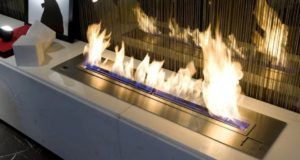
Most of us tend to take our daily comforts for granted, including a warm and cozy house in the cold winter months when the last place you want to be is outdoors.
Modern furnaces make it possible to hunker down for the winter and stay comfortable all season long. But if you've ever had your furnace break down, you understand how much you take it for granted and how quickly your home can become cold.
Maintaining your furnace year-round ensures that you won't have an unexpected breakdown when you need heat the most.
But how often should you get Houston heating maintenance done on your furnace? And what should you look for in a reputable technician?
Read on to find out:
How Often Should You Seek Houston Heating Maintenance
Even in areas that are warmer than others, we all depend on our heaters to work when we need them to on those cold days. But how often should have your heater checked out to keep it running all year long?
Most furnace manufacturers agree than maintenance should be conducted on a yearly basis. In fact, your furnace warranty probably mentions that damage done to your furnace as a lack of regular maintenance will not be covered. This is reason enough to keep up on your annual inspection.
And though chances are good that your technician won't find anything wrong with your furnace, it's still better to aim for prevention than paying for expensive damage.
What Happens During a Maintenance Tune-Up?
There's no industry standard when it comes to Houston heating maintenance, but the best technicians have a checklist that they adhere to. A technician you can trust will do a number of things including:
- Check the venting system for any blockage that could lead to combustion or carbon monoxide. This is a very important step in the inspection because a blockage could lead to carbon monoxide poisoning of the house.
- Check all the safety switches to make sure they're functioning properly so that your furnace won't overheat and start a fire.
- Check all the burners to make sure they ignite.
- Look at the drainage system to see if it needs to be cleaned.
- Make sure all the wires are connected and free from corrosion.
- Check the gas pressures, flame sensor, ignitor, and burners.
- Check the filter for cleanliness or to determine if it needs replacing.
- Inspection of the heat exchanger.
What you want is a thorough, responsible technician to perform your Houston heating maintenance. If a technician comes and checks your furnace and calls it good in a matter of minutes, they probably weren't looking at your system as well as they should be.
There are plenty of technicians that charge a very cheap rate to check your heating system but keep in mind that you really do get what you pay for, and in most instances where the rate is low, they aren't going through a checklist like the one above.
What are the Benefits of Furnace Maintenance?
As we've already mentioned, a furnace that isn't serviced regularly can stop working without warning. But it can also be a health hazard. By having your furnace checked out every year, your technician can prevent potentially serious problems.
Carbon monoxide leaks, for example, are nearly impossible for the untrained person to detect since the gas is both odorless and colorless. Carbon monoxide leads to dizziness, headaches, nausea, and possibly death. Thousands of people head to emergency rooms every year due to carbon monoxide poisoning.
When you keep up-to-date on inspections, you significantly reduce the chances of carbon monoxide poisoning and keep your family protected.
Another benefit of bothering with an inspection is savings. Though you might be tempted to avoid the initial cost of inspection, it's a small expense compared to what you could end up paying in repairs. The difference can be hundreds of dollars in savings by opting for preventative costs versus big future repairs.
Inspections also save energy in the long run. Your technician can do most of the work for you, but as a homeowner, you can take charge by changing your air filters every three months to avoid clogged air filters and restricted airflow.
Be sure to ask your HVAC professional about the benefits of a programmable thermostat if you don't already have one. Having one in place can save you a chunk of change on your energy bills.
New Systems Still Require Maintenance
Don't make the mistake of assuming you don't need to bother with maintenance because your system is somewhat new.
Your manufacturer will likely require you to keep up regular maintenance and keep a record of such before you can make any warranty claims. So it's not only important to keep those maintenance efforts going for the longevity of your system, but for the sake of your warranty as well.
Contact Us to Schedule Your Maintenance Appointment
Now that you understand the importance of regular Houston heating maintenance efforts, give us a call today to schedule your next inspection.
We'll come to check out your furnace system to make sure everything is running smoothly and we'll answer all your questions along the way.
And don't wait until the cold weather is already upon you! Take advantage of our professional services right away so you can rest easy knowing your home is ready for winter and the air you're breathing is safe and sanitary for months to come.
7 Affordable Ways to Come Home to a Warm House This Fall and Winter
Winter is approaching and you must be thinking of how to not only keep your house warm but do so in an affordable way. Homeowners are regularly advised to overhaul their inefficient heating systems, install double glazing, and use thorough insulation, but these are expensive tactics.
You need cheaper and quicker ways to keep your house warm. With summer coming to an end, fall and winter’s cold is just around the corner. Leverage these 7 tips to ensure that you can come home to a warm house.
1. Stop Heat Loss up the Chimney
Make good use of your fireplace during winter. There’s a possibility that you could be wasting a lot of heat energy from your fireplace via the chimney. This can be very costly because so much firewood would go into waste as you struggle to keep your house warm.
To prevent this heat loss, consider using a chimney balloon, which is used to block the opening of a chimney to save energy by stopping chimney drafts. It is made of a durable, reactive laminate and is very affordable.
All you need to do is to place it inside the chimney then inflate it until it fills the chimney opening; this helps in stopping any escaping heat or incoming cold air.
2. Upgrade Your Boiler
If you’re using an old boiler in the house - more than 10 years old - then it is high time you replaced it with a modern model. The new A-rated boilers are very efficient because they use smaller amounts of fuel or gas to produce larger amounts of heat energy.
3. Let the Sunlight in During the Day
Sunlight is a natural source of heat that doesn’t cost anything. You can make good use of it by ensuring that during the day, you capture as much heat from the sun as possible. To do this, open up all your curtains in the morning to let sunlight in.
You only need to open the curtains that can block sunlight from your house and leave those that don’t block any sunlight. Once the sun goes down, close all the curtains to keep the heat from escaping through the doors or windows.
If you are in a region that gets extremely cold during winter, you can consider purchasing insulated curtains to help keep the house warm. You can even put some temporary curtains, rugs, or sheets over the doors and windows to the outside at night while you’re sleeping.
These will offer some insulation and keep your house warm.
4. Mitigate the Stack Effect
Stack effect is a principle in physics which explains the movement of air in and out of buildings. As the air in the house gets warm, it will rise and this will create some negative pressure in the lower levels of the house.
The low pressure will by the laws of nature cause the cold air from outside to move into the house through any available openings. Stack effect is worse in the tall buildings because as more warm air rises, more cold air will be pulled in.
To mitigate this and have a warm house, you need to seal all the gaps that can allow cold air into the house, especially those at the lower levels. Check the bottom of your doors for any gaps and seal them using some rags or door snakes.
You can also check for any gaps in windows. To test for these gaps, hold a lit candle close to the places you suspect and observe how the flame behaves. A flickering flame is an indication that there’s some air leakage.
Do not ignore even small gaps; the cold air that comes in through such gaps throughout the night can cause lots of discomforts.
5. To Get a Warm House, Use the Oven More
Broiling, convecting, and baking things is the best way to keep your house warmer, particularly the rooms closest to the kitchen. It might be true that you don’t use your oven much during the summer because it makes the house hotter, so during winter take advantage of the oven to supply heat into the house.
Don’t be afraid to bake tons of cake and roast chicken when temperatures dip.
6. Move Furniture Away from Vents
Check all your furniture to see if there’s any that you placed in front of heating vents. If so, move the furniture away from the vent, at least for winter. You can return them to their position during the summer.
If some heating vents are blocked, some rooms will not get their maximum heat potential.
7. Install a Programmable Thermostat
Installing a programmable thermostat will ensure that your house is only heated when necessary. Installing one will ensure that your energy consumption is efficient and your monthly bills are low.
Furthermore, a programmable thermostat will save you a lot of time. You’ll not have to manually turn it off every time you are leaving the house and switch it on or adjust it every time you are in the house - the automated thermostat will do the job for you.
A programmable thermostat allows you to set the temperatures exactly the way you want them to be and for a time duration of your choice. You can even program it for a whole week.
If you can get a smart thermostat, even better. This device can detect the ambient temperature and respond accordingly. It can also detect when you leave the house and when you get back in.
A Warm House Is Good for You and Your Family
A warm house is beneficial to the well-being and health of your family. Cold houses are linked to poor health, particularly in young children. Keeping your house warm will not only make it cozy and homey but also beneficial to your health.
It is cheaper to keep the house warm than to spend on medical bills. If you are in need of professionals to install, maintain or repair air conditioning and heating services, be sure to check out our page.
Houston Air Conditioning Maintenance: 6 Tips You Need to Know
As the average Houston homeowner spends more than a quarter of its energy budget on air conditioning alone, it's vital to find ways to save. One of the best ways to save money is to keep your unit working properly with regular maintenance. For homeowners in Houston, air conditioning maintenance is a way to keep a unit running smoothly and at maximum efficiency.
Here are six tips that you need to know.
1. Clean Your Air Filters
One of the easiest things to do as a homeowner is to clean the air filters on your air conditioner. The filters are responsible for blocking out all the harmful dust and dirt that's sucked into the machine as it runs. It also keeps bacteria and microorganisms out.
One of the best impacts it has on your home is to keep out insects and pests. However, if you don't clean out your filters, you make it harder for your machine to run. The holes on the air filter will get clogged and when your machine tries to run, it's going to have to work harder to do less.
Air filters are usually easy for you to access. Lift up the front panel of your unit or if you have vents for airflow, there's probably a filter there. Larger HVAC units need to have their filters replaced a few times a year.
2. Remove Exterior Dirt
The dirt on the outside of your air conditioning unit could be making things harder for you. When the outdoor compressor is cluttered and clogged with debris, it's not going to run efficiently.
Your compressor needs to be outside so that it can bring in lots of fresh air. However, animal waste, dust, dirt, and leaves can easily get into the machine. These impurities not only end up in your air but also get in the way of the function of the machine.
When a machine is working harder, it's going to break down sooner. Outdoor compressors aren't designed to handle extra weight or obstructions. Cleaning up your impurities on a monthly basis ensures that you're not hindered by foliage.
If you can put it above-ground foliage, you can save yourself a lot of hassle with just a two-foot lift beneath the unit.
3. Consider Covering it When Not in Use
If you're not using your AC unit for the next few months, leaving it dormant could lead it to degrade. During the winter, it's a hassle to remove an AC unit. However, you should still consider ways to keep it carefully wrapped.
If you're going on a month-long vacation, that's another reason to wrap it up. Wrapping your air conditioner with packaging, a box, or cloth can ensure that you keep dust particles out of the components. This extra layer of protection ensures it maintains its efficiency.
If you have a larger HVAC system, you can turn it off and disconnect it before you cover it to ensure you don't run into issues. Make sure to leave a note over the switch or panel to remind you months later to clear the covering before you get it started again.
4. Deal With Refrigerant Leaks
Leaks of your refrigerant are not only dangerous but also can be costly. Leaks can be caused just by the vibration of the mechanism over time. It can also be a problem because of a joint in the coil that's not properly fitted.
If you need to refill your unit with refrigerant, it's going to be costly. The cost of the material has become increasingly expensive over time. Regular checks for leaks in your air conditioner is vital to ensure that you don't run into problems.
Many of the best units out there have detection and diagnosis built into the machine. They'll let you know if there's a refrigerant leakage problem as soon as it begins. However, if your unit is a little bit older, it might not have this mechanism.
Having a unit that can decrease compressor friction and vibration helps to prevent leakage. If you maintain your refrigerant gas, your unit will last much longer.
5. Watch For Corrosion
It's very common for condenser coils to become corroded. As they're exposed to dust and salt along with moisture, they're susceptible to deterioration.
Even just a small layer of dust can reduce the heat exchange capacity of the unit. Watch out for this issue on older units.
Indoor units have evaporator coils that can also collect dust. This unintended insulation keeps your unit from cooling as fast as it should.
6. Clean Out Your Drain Pipe
Just like the dust and debris that build up in your filter, you can also build up sludge in your drain pipe. While the pipe removes the extensive moisture from the room that allows you to get a nice breeze, it also takes some impurities with it. This can even cause clogs.
Take a wire and move it through the drainpipe to ensure that you keep it clear. Any blockage could keep your unit from working properly as the water can't move quickly enough. When you lose moisture control, mildew can grow and bad smells can fill the air.
Houston Air Conditioning Maintenance Professionals Can Help
If you're in Houston, air conditioning maintenance professionals are the best way to ensure your system works to maximum efficiency. Rather than replacing your whole system, doing a little bit of maintenance can prevent major issues down the road.
Summer's not quite over yet! If you need your AC serviced before it really starts to cool down, contact us to make an appointment!

